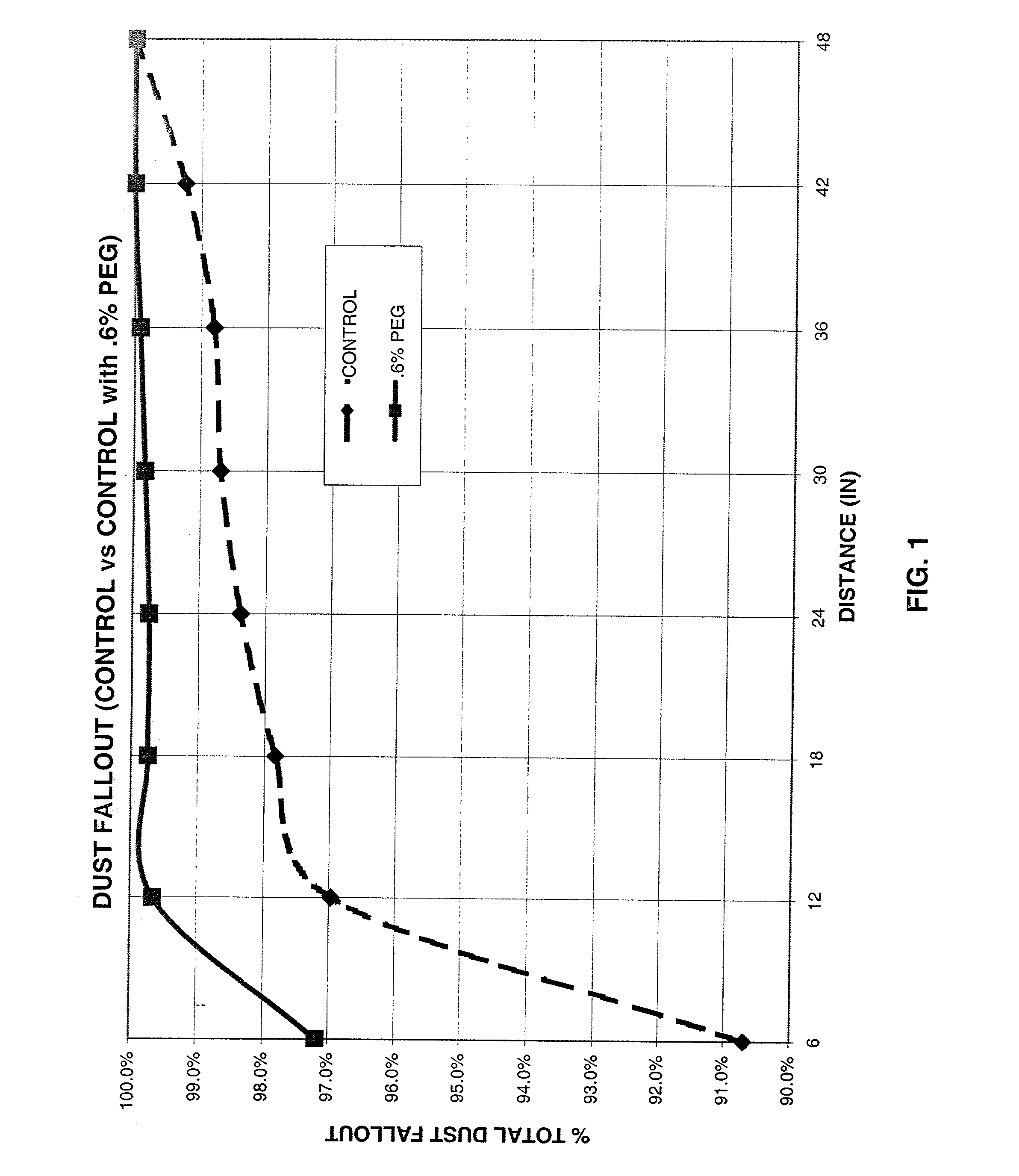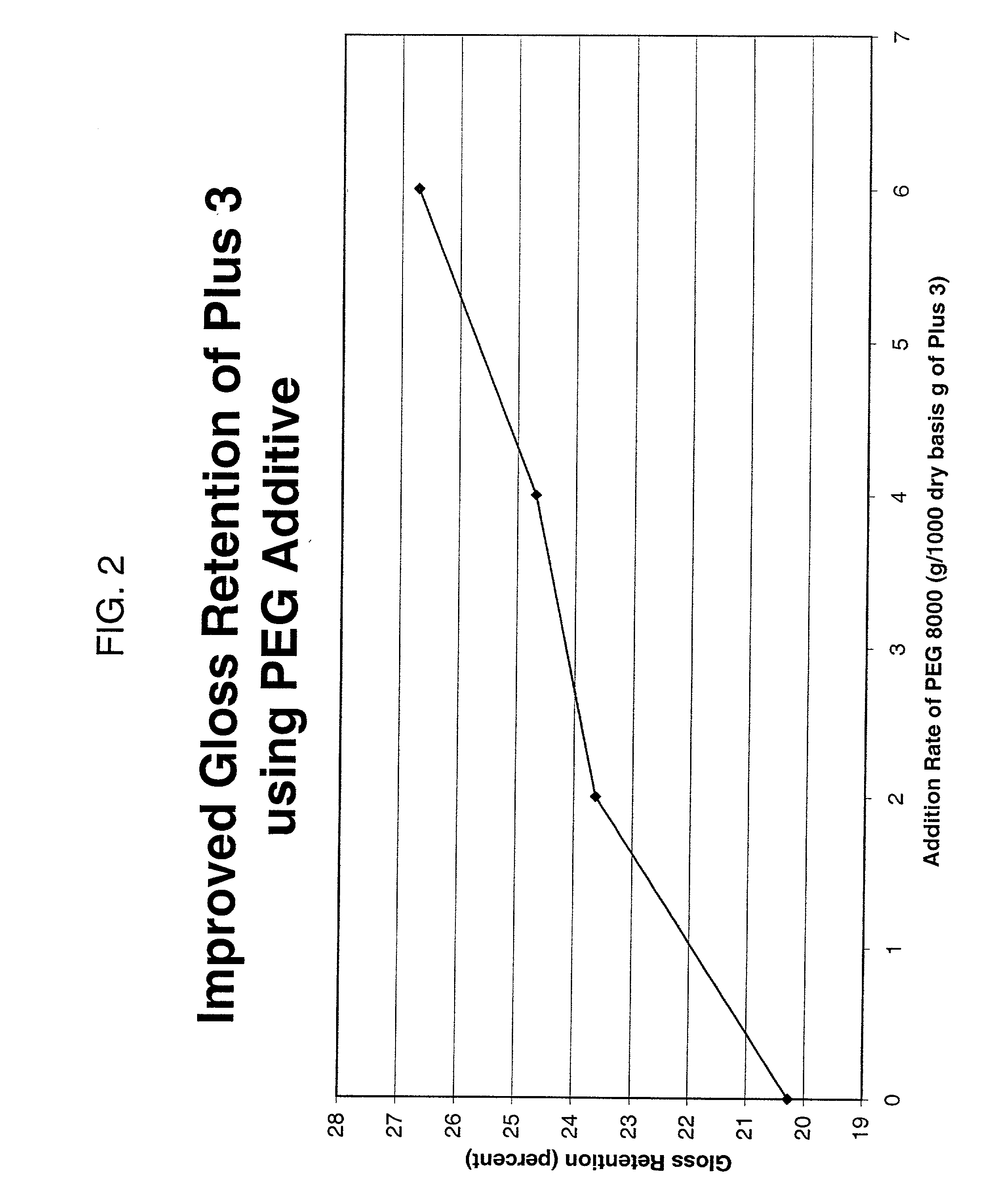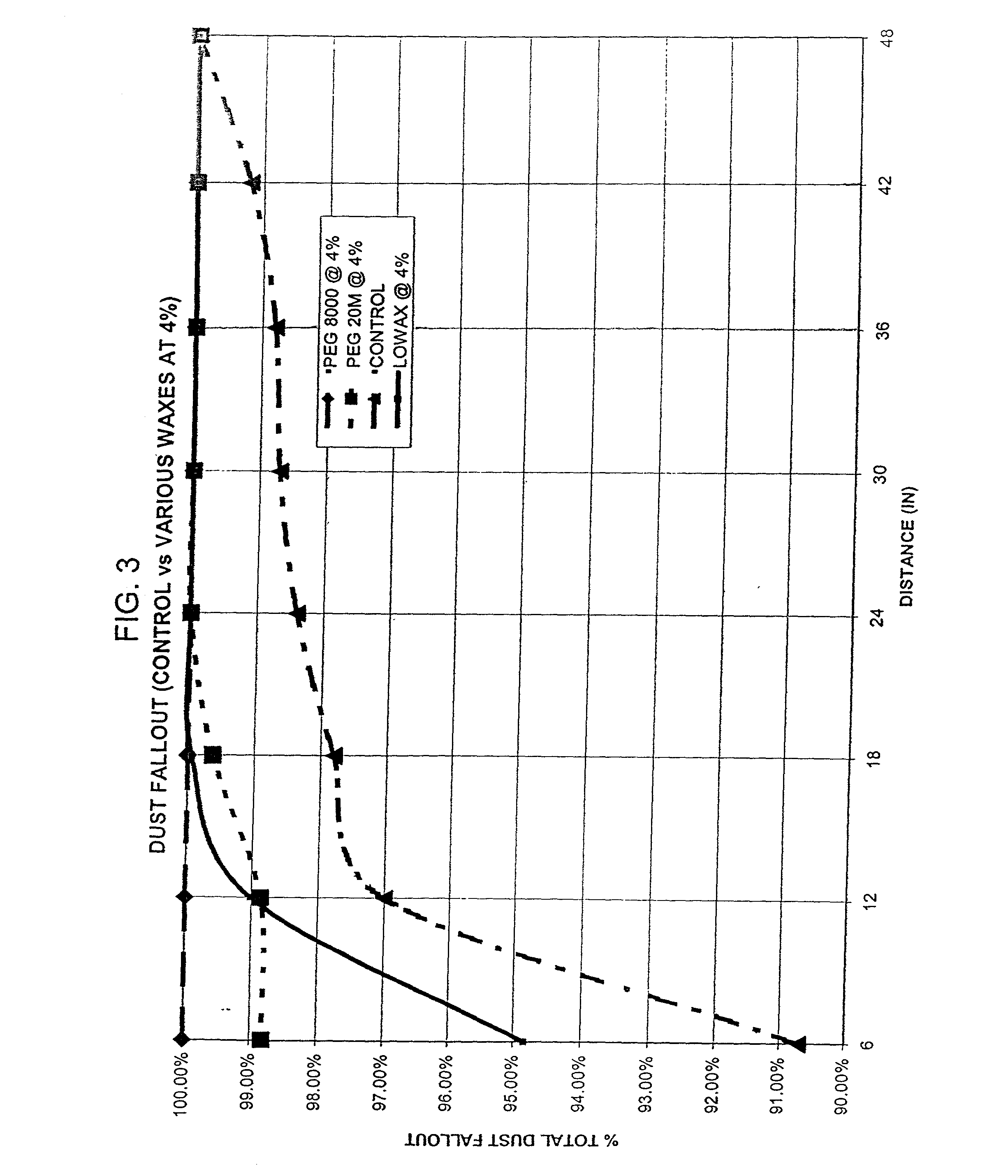Joint compound providing low dusting and good gloss retention
a compound and low dusting technology, applied in the direction of coatings, pigment pastes, etc., can solve the problems of uneven plaster drying, uneven distribution of dust reducing properties within the applied composition, and fine dust settling everywhere, so as to improve gloss retention, improve gloss retention, and less effort
- Summary
- Abstract
- Description
- Claims
- Application Information
AI Technical Summary
Benefits of technology
Problems solved by technology
Method used
Image
Examples
example 1
[0047] A lightweight joint compound was used as a base joint compound for this series of tests, and had the composition shown in Table I. The base joint compound is a commercial, ready-mix, drying type compound. There were no oils, paraffins, waxes, petroleum fractions, or glycols known to affect dusting properties present in the base joint compound. A sample of the base joint compound was labeled Sample A, and used as a control or comparative sample. A second sample of the base joint compound, Sample B, was modified by addition of CARBOWAX.RTM. 8000 (Dow Chemical, Midland, Mich.) at a concentration of 0.6%.
1TABLE I Composition of Base Joint Compound Calcium Carbonate Filler 74.72% Polyvinyl Acetate Binder 7.20% Attapulgite Clay 4.69% Perlite Filler 12.37% Preservative 0.2% Thickener .84%
[0048] Samples A and B were tested for the propensity to create airborne dust. A standard sample was prepared by creating a ten inch wide coating on a vertical 2.times.4 foot SHEETROCK.RTM. brand 3 / ...
example 2
[0051] Additional samples of the base joint compound were modified with either 0.2% or 0.4% by weight of CARBOWAX.RTM. 8000 (average molecular weight 8000 Daltons) polyethylene glycol. The samples were applied to wallboard and painted, with the object to compare the paint gloss values over the areas with and without an underlayer of joint compound. All samples were thinned with water to 200 Brabender viscosity (pin probe) and applied with a 10 inch Ames Tool box (depth control setting #2) over a drywall panel. After the joint compound had dried, it was painted with one coat of Sherwin Williams 1481 "Vizcaya" using a roller with 3 / 8" nap roller cover. Gloss values were obtained with a BYK Glossmeter, set for semi-gloss and 85.degree. angle. This test procedure is a modification of ASTM D523-89. The following gloss values were observed. These results are also shown in FIG. 2.
3TABLE III Effect of PEG on Paint Gloss Retention over Joint Compound CARBOWAX .RTM. 8000 0% 0.2% 0.4% 0.6% Con...
example 3
[0055] SHEETROCK.RTM. brand Lightweight Joint Compound Plus 3 was used as a base compound for a series of tests varying the molecular weight of the synthetic wax additive at concentrations of 4% dry weight. The additives tested were a polyethylene glycol having an average molecular weight of 8000 Daltons, an oxidized polyethylene glycol having an average molecular weight of 4000 Daltons and a polyethylene glycol having an average molecular weight of 20,000 Daltons. The samples were sanded and the dust collected as described in Example 1. Distribution of dust for each of the samples is shown in Table IV and in FIG. 3.
4TABLE IV Dust Fallout Distribution Inches A B C D MW 0 8000 17,500 4000 0-6 90.7% 100.0% 98.8% 94.8% 6-12 6.3% 0.0% 0.1% 4.2% 12-18 0.8% 0.0% 0.7% 0.9% 18-24 0.6% 0.0% 0.0% 0.1% 24-30 0.3% 0.0% 0.0% 0.0% 30-36 0.3% 0.0% 0.0% 0.0% 36-42 0.4% 0.0% 0.0% 0.0% 42-48 0.8% 0.0% 0.0% 0.0%
[0056] In all cases, the addition of a high molecular weight synthetic wax at a 4% concentr...
PUM
| Property | Measurement | Unit |
|---|---|---|
| wt % | aaaaa | aaaaa |
| melting temperature | aaaaa | aaaaa |
| density | aaaaa | aaaaa |
Abstract
Description
Claims
Application Information
 Login to View More
Login to View More - R&D
- Intellectual Property
- Life Sciences
- Materials
- Tech Scout
- Unparalleled Data Quality
- Higher Quality Content
- 60% Fewer Hallucinations
Browse by: Latest US Patents, China's latest patents, Technical Efficacy Thesaurus, Application Domain, Technology Topic, Popular Technical Reports.
© 2025 PatSnap. All rights reserved.Legal|Privacy policy|Modern Slavery Act Transparency Statement|Sitemap|About US| Contact US: help@patsnap.com



